- ▶
- Heaters/Source
- ▶
- Agilent Heaters and SensorsMass Spectrometry, Scientific Supplies & ManufacturingScientific Instrument Services 5973 Source Heater Tamper Resistant Allen Wrench 5973/5975 Quad Sensor 5985 Source Heater Assembly Agilent Interface Heater Assembly 5971 Interface Heater

- ▶
- Reference Material on InstrumentationArticle - A High Temperature Direct Probe for a Mass Spectrometer Design of a Direct Exposure Probe and Controller for use ona Hewlett-Packard 5989 Mass Spectrometer SIS AP1000 AutoProbe™ SIS AP2000 AutoProbe™ - Description of System HPP7: Direct Probe Electronics Console HPP7: Direct Probe for the Agilent (HP) 5973/5975 MSD HPP7: HP Direct Probe Application Notes HPP7: Installation Directions for the Direct Probe HPP7: Side Cover for the HP 5973 MSD HPP7: Support HPP7: Probe Inlet System for the Agilent (HP) 5973 and 5975 MSD with Automatic Indexed Stops HPP7: Theory of Operation of the Direct Probe and Probe Inlet System Direct Thermal Extraction Thermal Desorption Application Notes Environmental Thermal Desorption Application Notes Food Science Thermal Desorption Application Notes Forensic Thermal Desorption Application Notes GC Cryo-Trap Application Notes Headspace Application Notes Purge & Trap Thermal Desorption Application Notes Theory of Operation of the AutoDesorb® System AutoDesorb Notes for SIS Dealers Adsorbent Resin Application Notes Installation of the Short Path Thermal Desorption System on Agilent (HP) and Other GCs Installation of the Short Path Thermal Desorption System on a Varian 3400 GC AutoDesorb® System Development Team Thermal Desorption Applications and Reference Materials Installation of the Short Path Thermal Desorption System - TD5 Part I - Design & Operation of the Short Path ThermalDesorption System Installation Instructions for the Model 951 GC Cryo-Trap on the HP 5890 Series GC Installation Instructions for the Model 961 GC Cryo-Trap on the HP 5890 Series GC Operation of the Model 951/961 GC Cryo-Trap SIS GC Cryo Traps - Theory of Operation NIST/EPA/NIH Mass Spectral Enhancements - 1998 version (NIST98) SIMION 3D Ion Optics Class Mass Spectrometer Source Cleaning Methods MS Tip: Mass Spectrometer Source Cleaning Procedures Mass Spec Source Cleaning Procedures Micro-Mesh® Abrasive Sheets Research Papers Using New Era Syringe Pump Systems EI Positive Ion Spectra for Perfluorokerosene (PFK) Cap Liner Information How do I convert between fluid oz and milliliters? Which bottle material should I choose? Which bottle mouth should I choose? The Bottle Selection Guide CGA Connections for Gas Tanks Chemical Reaction Interface Mass Spectrometry (CRIMS)

- TD
- ▶
- AccessoriesTD Supply Kit Desorption Tubes Adsorbent Resins Desorption Tube Needles Desorption Tube Seals Desorption System Fittings GC Cryo-Trap Extraction Cell TD Sample Loader Prepacked, Conditioned Desorption Tubes Desorption Tube Packing Accessories Stainless Steel Purge Heads Injection Port Liners Tenax TA Poster TD Application Notes Customer Service

- LiteratureApplication Notes Adsorbent Resins Guide Mass Spec Tips SDS Sheets FAQ MS Calibration Compound Spectra Manuals MS Links/Labs/ Organizations MS Online Tools Flyers on Products/Services Scientific Supplies Catalog About Us NextAdvance Bullet Blender® Homogenizer Protocols Micro-Mesh® Literature Instrumentation Literature Agilent GC/MS Literature SIS News / E-Mail Newsletter NIST MS Database - Update Notifications

- ▶
- Thermal Desorption Applications and Reference MaterialsDirect Thermal Extraction Headspace Environmental Food Science Applications Pharmaceuticals Forensic Note 103: EPA Method 325B, Novel Thermal Desorption Instrument Modification to Improve Sensitivity Note 102: Identification of Contaminants in Powdered Beverages by Direct Extraction Thermal Desorption GC/MS Note 101: Identification of Contaminants in Powdered Foods by Direct Extraction Thermal Desorption GC/MS Note 100: Volatile and Semi-Volatile Profile Comparison of Whole Versus Cracked Versus Dry Homogenized Barley Grains by Direct Thermal Extraction Note 99: Volatile and Semi-Volatile Profile Comparison of Whole vs. Dry Homogenized Wheat, Rye and Barley Grains by Direct Thermal Extraction GC/MS Note 98: Flavor and Aroma Profiles of Truffle Oils by Thermal Desorption GC/MS Note 97: Flavor Profiles of Imported and Domestic Beers by Purge & Trap Thermal Desorption GC/MS Note 95: Detection of Explosives on Clothing Material by Direct and AirSampling Thermal Desorption GC/MS Note 94: Detection of Nepetalactone in the Nepeta Cataria Plant by Thermal Desorption GC/MS Note 93: Detection of Benzene in Carbonated Beverages with Purge & Trap Thermal Desorption GC/MS Note 88: Analysis of Silicone Contaminants on Electronic Components by Thermal Desorption GC-MS Note 84: Vacuum Pump Exhaust Filters - Charcoal Exhaust Traps Note 83: Vacuum Pump Exhaust Filters - Oil Mist Eliminators Note 82: Vacuum Pump Exhaust Filters Note 80: Design, Development and Testing of a Microprocessor ControlledAutomated Short Path Thermal Desorption Apparatus Note 79: Volatile Organic Compounds From Electron Beam Cured and Partially Electron Beam Cured Packaging Using Automated Short Path Thermal Desorption Note 77: The Determination of Volatile Organic Compounds in VacuumSystem Components Note 75: An Apparatus for Sampling Volatile Organics From LivePlant Material Using Short Path Thermal Desorption Note 73: The Analysis of Perfumes and their Effect on Indoor Air Pollution Note 71: Flavor Profile Determination of Rice Samples Using Shor tPath Thermal Desorption GC Methods Note 65: Determination of Ethylene by Adsorbent Trapping and Thermal Desorption - Gas Chromatography Note 64: Comparison of Various GC/MS Techniques For the Analysis of Black Pepper (Piper Nigrum) Note 63: Determination of Volatile and Semi-Volatile Organics in Printer Toners Using Thermal Desorption GC Techniques Note 60: Programmable Temperature Ramping of Samples Analyzed ViaDirect Thermal Extraction GC/MS Note 57: Aroma Profiles of Lavandula species Note 55: Seasonal Variation in Flower Volatiles Note 54: Identification of Volatile Organic Compounds in Office Products Note 43: Volatile Organic Composition In Blueberries Note 42: The Influence of Pump Oil Purity on Roughing Pumps Note 41: Hydrocarbon Production in Pine by Direct Thermal Extraction Note 40: Comparison of Septa by Direct Thermal Extraction Note 39: Comparison of Sensitivity Of Headspace GC, Purge and Trap Thermal Desorption and Direct Thermal Extraction Techniques For Volatile Organics Note 38: A New Micro Cryo-Trap For Trapping Of Volatiles At the Front Of a GC Capillary Column Note 37: Volatile Organic Emissions from Automobile Tires Note 36: Identification Of Volatile Organic Compounds In a New Automobile Note 35: Volatile Organics Composition of Cranberries Note 34: Selection Of Thermal Desorption and Cryo-Trap Parameters In the Analysis Of Teas Note 33: Changes in Volatile Organic Composition in Milk Over Time Note 32: Selection and Use of Adsorbent Resins for Purge and Trap Thermal Desorption Applications Note 31: Volatile Organic Composition in Several Cultivars of Peaches Note 30: Comparison Of Cooking Oils By Direct Thermal Extraction and Purge and Trap GC/MS Note 29: Analysis Of Volatile Organics In Oil Base Paints By Automated Headspace Sampling and GC Cryo-Focusing Note 28: Analysis Of Volatile Organics In Latex Paints By Automated Headspace Sampling and GC Cryo-Focusing Note 27: Analysis of Volatile Organics In Soils By Automated Headspace GC Note 26: Volatile Organics Present in Recycled Air Aboard a Commercial Airliner Note 25: Flavor and Aroma in Natural Bee Honey Note 24: Selection of GC Guard Columns For Use With the GC Cryo-Trap Note 23: Frangrance Qualities in Colognes Note 22: Comparison Of Volatile Compounds In Latex Paints Note 21: Detection and Identification Of Volatile and Semi-Volatile Organics In Synthetic Polymers Used In Food and Pharmaceutical Packaging Note 20: Using Direct Thermal Desorption to Assess the Potential Pool of Styrene and 4-Phenylcyclohexene In Latex-Backed Carpets Note 19: A New Programmable Cryo-Cooling/Heating Trap for the Cryo-Focusing of Volatiles and Semi-Volatiles at the Head of GC Capillary Columns Note 18: Determination of Volatile Organic Compounds In Mushrooms Note 17: Identification of Volatile Organics in Wines Over Time Note 16: Analysis of Indoor Air and Sources of Indoor Air Contamination by Thermal Desorption Note 14: Identification of Volatiles and Semi-Volatiles In Carbonated Colas Note 13: Identification and Quantification of Semi-Volatiles In Soil Using Direct Thermal Desorption Note 12: Identification of the Volatile and Semi-Volatile Organics In Chewing Gums By Direct Thermal Desorption Note 11: Flavor/Fragrance Profiles of Instant and Ground Coffees By Short Path Thermal Desorption Note 10: Quantification of Naphthalene In a Contaminated Pharmaceutical Product By Short Path Thermal Desorption Note 9: Methodologies For the Quantification Of Purge and Trap Thermal Desorption and Direct Thermal Desorption Analyses Note 8: Detection of Volatile Organic Compounds In Liquids Utilizing the Short Path Thermal Desorption System Note 7: Chemical Residue Analysis of Pharmaceuticals Using The Short Path Thermal Desorption System Note 6: Direct Thermal Analysis of Plastic Food Wraps Using the Short Path Thermal Desorption System Note 5: Direct Thermal Analysis Using the Short Path Thermal Desorption System Note 4: Direct Analysis of Spices and Coffee Note 3: Indoor Air Pollution Note 2: Detection of Arson Accelerants Using Dynamic Headspace with Tenax® Cartridges Thermal Desorption and Cryofocusing Note 1: Determination of Off-Odors and Other Volatile Organics In Food Packaging Films By Direct Thermal Analysis-GC-MS

- Application NotesNote 103: EPA Method 325B, Novel Thermal Desorption Instrument Modification to Improve Sensitivity Note 102: Identification of Contaminants in Powdered Beverages by Direct Extraction Thermal Desorption GC/MS Note 101: Identification of Contaminants in Powdered Foods by Direct Extraction Thermal Desorption GC/MS Note 100: Volatile and Semi-Volatile Profile Comparison of Whole Versus Cracked Versus Dry Homogenized Barley Grains by Direct Thermal Extraction Note 99: Volatile and Semi-Volatile Profile Comparison of Whole vs. Dry Homogenized Wheat, Rye and Barley Grains by Direct Thermal Extraction GC/MS Note 98: Flavor and Aroma Profiles of Truffle Oils by Thermal Desorption GC/MS Note 97: Flavor Profiles of Imported and Domestic Beers by Purge & Trap Thermal Desorption GC/MS Note 96: Reducing Warping in Mass Spectrometer Filaments, with SISAlloy® Yttria/Rhenium Filaments Note 95: Detection of Explosives on Clothing Material by Direct and AirSampling Thermal Desorption GC/MS Note 94: Detection of Nepetalactone in the Nepeta Cataria Plant by Thermal Desorption GC/MS Note 93: Detection of Benzene in Carbonated Beverages with Purge & Trap Thermal Desorption GC/MS Note 92: Yttria Coated Mass Spectrometer Filaments Note 91: AutoProbe DEP Probe Tip Temperatures Note 90: An Automated MS Direct Probe for use in an Open Access Environment Note 89: Quantitation of Organics via a Mass Spectrometer Automated Direct Probe Note 88: Analysis of Silicone Contaminants on Electronic Components by Thermal Desorption GC-MS Note 87: Design and Development of an Automated Direct Probe for a Mass Spectrometer Note 86: Simulation of a Unique Cylindrical Quadrupole Mass Analyzer Using SIMION 7.0. Note 85: Replacing an Electron Multiplier in the Agilent (HP) 5973 MSD Note 84: Vacuum Pump Exhaust Filters - Charcoal Exhaust Traps Note 83: Vacuum Pump Exhaust Filters - Oil Mist Eliminators Note 82: Vacuum Pump Exhaust Filters Note 81: Rapid Bacterial Chemotaxonomy By DirectProbe/MSD Note 80: Design, Development and Testing of a Microprocessor ControlledAutomated Short Path Thermal Desorption Apparatus Note 79: Volatile Organic Compounds From Electron Beam Cured and Partially Electron Beam Cured Packaging Using Automated Short Path Thermal Desorption Note 78: A New Solution to Eliminate MS Down-Time With No-Tool-Changing of Analytical GC Columns Note 77: The Determination of Volatile Organic Compounds in VacuumSystem Components Note 76: Determination of the Sensitivity of a CRIMS System Note 75: An Apparatus for Sampling Volatile Organics From LivePlant Material Using Short Path Thermal Desorption Note 74: Examination of Source Design in Electrospray-TOF Using SIMION 3D Note 73: The Analysis of Perfumes and their Effect on Indoor Air Pollution Note 72: 1998 Version of the NIST/EPA/NIH Mass Spectral Library, NIST98 Note 71: Flavor Profile Determination of Rice Samples Using Shor tPath Thermal Desorption GC Methods Note 70: Application of SIMION 6.0 To a Study of the Finkelstein Ion Source: Part II Note 69: Application of SIMION 6.0 To a Study of the Finkelstein Ion Source: Part 1 Note 68: Use of a PC Plug-In UV-Vis Spectrometer To Monitor the Plasma Conditions In GC-CRIMS Note 67: Using Chemical Reaction Interface Mass Spectrometry (CRIMS) To Monitor Bacterial Transport In In Situ Bioremediation Note 66: Probe Tip Design For the Optimization of Direct Insertion Probe Performance Note 65: Determination of Ethylene by Adsorbent Trapping and Thermal Desorption - Gas Chromatography Note 64: Comparison of Various GC/MS Techniques For the Analysis of Black Pepper (Piper Nigrum) Note 63: Determination of Volatile and Semi-Volatile Organics in Printer Toners Using Thermal Desorption GC Techniques Note 62: Analysis of Polymer Samples Using a Direct Insertion Probe and EI Ionization Note 61: Analysis of Sugars Via a New DEP Probe Tip For Use With theDirect Probe On the HP5973 MSD Note 60: Programmable Temperature Ramping of Samples Analyzed ViaDirect Thermal Extraction GC/MS Note 59: Computer Modeling of a TOF Reflectron With Gridless Reflector Using SIMION 3D Note 58: Direct Probe Analysis and Identification of Multicomponent Pharmaceutical Samples via Electron Impact MS Note 57: Aroma Profiles of Lavandula species Note 56: Mass Spec Maintenance & Cleaning Utilizing Micro-Mesh® Abrasive Sheets Note 55: Seasonal Variation in Flower Volatiles Note 54: Identification of Volatile Organic Compounds in Office Products Note 53: SIMION 3D v6.0 Ion Optics Simulation Software Note 52: Computer Modeling of Ion Optics in Time-of-Flight mass Spectrometry Using SIMION 3D Note 51: Development and Characterization of a New Chemical Reaction Interface for the Detection of Nonradioisotopically Labeled Analytes Using Mass Spectrometry (CRIMS) Note 50: The Analysis of Multiple Component Drug Samples Using a Direct Probe Interfaced to the HP 5973 MSD Note 49: Analysis of Cocaine Utilizing a New Direct Insertion Probe on a Hewlett Packard 5973 MSD Note 48: Demonstration of Sensitivity Levels For the Detection of Caffeine Using a New Direct Probe and Inlet for the HP 5973 MSD Note 47: The Application Of SIMION 6.0 To Problems In Time-of-Flight Mass Spectrometry Note 46: Delayed Extraction and Laser Desorption: Time-lag Focusing and Beyond Note 45: Application of SIMION 6.0 to Filament Design for Mass Spectrometer Ionization Sources Note 44: The Design Of a New Direct Probe Inlet For a Mass Spectrometer Note 43: Volatile Organic Composition In Blueberries Note 42: The Influence of Pump Oil Purity on Roughing Pumps Note 41: Hydrocarbon Production in Pine by Direct Thermal Extraction Note 40: Comparison of Septa by Direct Thermal Extraction Note 39: Comparison of Sensitivity Of Headspace GC, Purge and Trap Thermal Desorption and Direct Thermal Extraction Techniques For Volatile Organics Note 38: A New Micro Cryo-Trap For Trapping Of Volatiles At the Front Of a GC Capillary Column Note 37: Volatile Organic Emissions from Automobile Tires Note 36: Identification Of Volatile Organic Compounds In a New Automobile Note 35: Volatile Organics Composition of Cranberries Note 34: Selection Of Thermal Desorption and Cryo-Trap Parameters In the Analysis Of Teas Note 33: Changes in Volatile Organic Composition in Milk Over Time Note 32: Selection and Use of Adsorbent Resins for Purge and Trap Thermal Desorption Applications Note 31: Volatile Organic Composition in Several Cultivars of Peaches Note 30: Comparison Of Cooking Oils By Direct Thermal Extraction and Purge and Trap GC/MS Note 29: Analysis Of Volatile Organics In Oil Base Paints By Automated Headspace Sampling and GC Cryo-Focusing Note 28: Analysis Of Volatile Organics In Latex Paints By Automated Headspace Sampling and GC Cryo-Focusing Note 27: Analysis of Volatile Organics In Soils By Automated Headspace GC Note 26: Volatile Organics Present in Recycled Air Aboard a Commercial Airliner Note 25: Flavor and Aroma in Natural Bee Honey Note 24: Selection of GC Guard Columns For Use With the GC Cryo-Trap Note 23: Frangrance Qualities in Colognes Note 22: Comparison Of Volatile Compounds In Latex Paints Note 21: Detection and Identification Of Volatile and Semi-Volatile Organics In Synthetic Polymers Used In Food and Pharmaceutical Packaging Note 20: Using Direct Thermal Desorption to Assess the Potential Pool of Styrene and 4-Phenylcyclohexene In Latex-Backed Carpets Note 19: A New Programmable Cryo-Cooling/Heating Trap for the Cryo-Focusing of Volatiles and Semi-Volatiles at the Head of GC Capillary Columns Note 18: Determination of Volatile Organic Compounds In Mushrooms Note 17: Identification of Volatile Organics in Wines Over Time Note 16: Analysis of Indoor Air and Sources of Indoor Air Contamination by Thermal Desorption Note 14: Identification of Volatiles and Semi-Volatiles In Carbonated Colas Note 13: Identification and Quantification of Semi-Volatiles In Soil Using Direct Thermal Desorption Note 12: Identification of the Volatile and Semi-Volatile Organics In Chewing Gums By Direct Thermal Desorption Note 11: Flavor/Fragrance Profiles of Instant and Ground Coffees By Short Path Thermal Desorption Note 10: Quantification of Naphthalene In a Contaminated Pharmaceutical Product By Short Path Thermal Desorption Note 9: Methodologies For the Quantification Of Purge and Trap Thermal Desorption and Direct Thermal Desorption Analyses Note 8: Detection of Volatile Organic Compounds In Liquids Utilizing the Short Path Thermal Desorption System Note 7: Chemical Residue Analysis of Pharmaceuticals Using The Short Path Thermal Desorption System Note 6: Direct Thermal Analysis of Plastic Food Wraps Using the Short Path Thermal Desorption System Note 5: Direct Thermal Analysis Using the Short Path Thermal Desorption System Note 4: Direct Analysis of Spices and Coffee Note 3: Indoor Air Pollution Note 2: Detection of Arson Accelerants Using Dynamic Headspace with Tenax® Cartridges Thermal Desorption and Cryofocusing Note 1: Determination of Off-Odors and Other Volatile Organics In Food Packaging Films By Direct Thermal Analysis-GC-MS Tech No. "A" Note 14: Elimination of "Memory" Peaks in Thermal Desorption Improving Sensitivity in the H.P. 5971 MSD and Other Mass Spectrometers - Part I of II Improving Sensitivity in the H.P. 5971 MSD and Other Mass Spectrometers- Part II of II Adsorbent Resins Guide Development and Field Tests of an Automated Pyrolysis Insert for Gas Chromatography. Hydrocarbon Production in Pine by Direct Thermal Extraction A New Micro Cryo-Trap for the Trapping of Volatiles at the Front of a GC Capillary (019P) - Comparison of Septa by Direct Thermal Extraction Volatile Organic Composition in Blueberry Identification of Volatile Organic Compounds in Office Products Detection and Indentification of Volatiles in Oil Base Paintsby Headspace GC with On Column Cryo-Trapping Evaluation of Septa Using a Direct Thermal Extraction Technique INFLUENCE OF STORAGE ON BLUEBERRY VOLATILES Selection of Thermal Desorption and Cryo-Trap Parameters in the Analysis of Teas Redesign and Performance of a Diffusion Based Solvent Removal Interface for LC/MS The Design of a New Direct Probe Inlet for a Mass Spectrometer Analytes Using Mass Spectrometry (CRIMS) Application of SIMION 6.0 to Filament Design for Mass Spectrometer Ionization Sources A Student Guide for SIMION Modeling Software Application of SIMION 6.0 to Problems in Time-of-flight Mass Spectrometry Comparison of Sensitivity of Headspace GC, Purge and TrapThermal Desorption and Direct Thermal Extraction Techniques forVolatile Organics The Influence of Pump Oil Purity on Roughing Pumps Analysis of Motor Oils Using Thermal Desorption-Gas Chromatography-Mass Spectrometry IDENTIFICATION OF VOLATILE ORGANIC COMPOUNDS IN PAPER PRODUCTS Computer Modeling of Ion Optics in Time-of-Flight mass Spectrometry using SIMION 3D Seasonal Variation in Flower Volatiles Development of and Automated Microprocessor Controlled Gas chromatograph Fraction Collector / Olfactometer Delayed Extraction and Laser Desorption: Time-lag Focusing and Beyond A New Micro Cryo-Trap for the Trapping of Volatiles at the Front of a GC Column Design of a Microprocessor Controlled Short Path Thermal Desorption Autosampler Computer Modeling of Ion Optics in Time-of-Flight Mass Spectrometry Using SIMION 3D Thermal Desorption Instrumentation for Characterization of Odors and Flavors

- ▶
- Note 80: Design, Development and Testing of a Microprocessor ControlledAutomated Short Path Thermal Desorption Apparatus (This Page)
Presented at PittCon 99, Orlando, FL, March 1999
Volatile and semi-volatile organic compounds (VOC's) are of interest in many industries. The Short Path Thermal Desorption (SPDT) technique has been widely used to introduce VOC's into the gas chromatograph (GC) capillary column for analysis. This method involves the purging and trapping of VOC's onto glass-lined stainless steel (GLT) desorption tubes which are packed with an adsorbent resin. These tubes are then placed into the SPTD system which thermally extracts the volatiles off the adsorbent resin and into the GC. In an alternate method called Direct Thermal Extraction (DTE), solid matrix samples are placed directly into the GLT desorption tubes and the VOC's are thermally extracted in a one-step process from the sample and into the GC for analysis.
A manual version of the SPTD System has been on the market for more than 8 years, and an automated version has been under development for the past three years. The new AutoDesorb System is the automated sampling version of the patented SIS Short Path Thermal Desorption System. It is designed for the automatic and unattended pickup, injection and thermal extraction of volatile and semi-volatile organics from solid, liquid and gas samples for analysis by GC and GC/MS. This system uses a 12 position carousel for loading samples and the operation is controlled by a PC Windows program that is integrated with the Hewlett-Packard ChemStation program.
INTRODUCTION
The AutoDesorb was designed to operate with the HP-6890 GC or HP-5973 GC/MS. The AutoDesorb System consists of three components, the AutoDesorb Tower, the AutoDesorb Interface and the AutoDesorb PC Software.
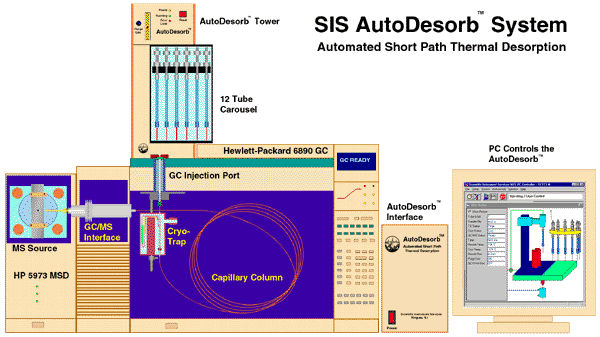
Figure 1 - The AutoDesorb System Components
The AutoDesorb Tower sits on top of the GC injection port of the HP 6890 GC, where it is utilized for the direct thermal desorption of both volatile and semi-volatile analytes into the GC injection port and column. It is NOT permanently mounted to the GC. It is held in place by gravity and can be lifted up and removed in seconds to restore the GC to its normal operation. The AutoDesorb System permits the setup and automatic analysis of up to 12 desorption tubes.
The AutoDesorb Interface is an electronics console that interfaces the AutoDesorb Tower to the PC. It consists of a microprocessor that contains software to control the various states of the thermal desorption process including the control of desorption temperatures, cryo-trap cooling and heating temperatures, carrier gas pressure measurement and the various desorption processes. An RS232 cable interfaces this microprocessor to the PC. A desorption system cable interfaces the microprocessor to the AutoDesorb Tower.
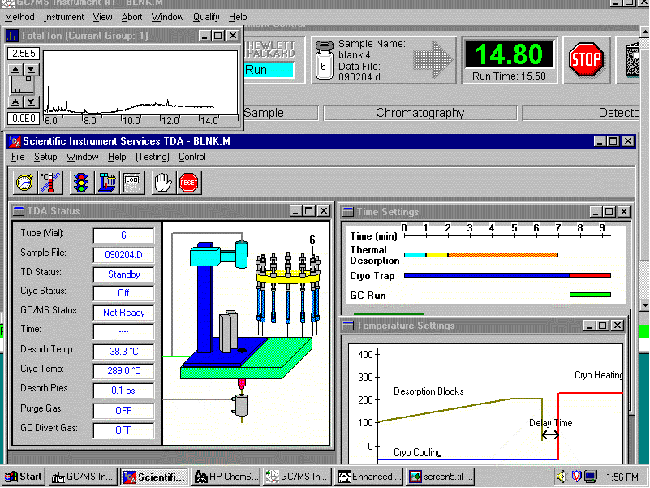
Figure 2 - AutoDesorb PC Windows are integrated into the Hewlett-Packard ChemStation System.
The AutoDesorb system is controlled by a PC Windows program that is integrated with the HP ChemStation GC or GC/MS program to control the automatic injection, timed desorption, temperature ramp of heater blocks, control of the GC Cryo-Trap accessory, and remote starting of the GC and Mass Spectrometer. A series of PC windows permits the set up of system parameters as well as the monitoring of the system states. A graphical screen displays the actual states of the various AutoDesorb system operations. The HP ChemStation program controls the analysis of single samples or multiple samples using the sequential running mode. Data for each sample is entered into the HP ChemStation program and downloaded automatically to the AutoDesorb PC software as each sample is analyzed. A log screen displays the results of each sample analyzed.

Figure 3 - Desorption Tube With Needle and Connecting Tube For Installation Into the AutoDesorb System
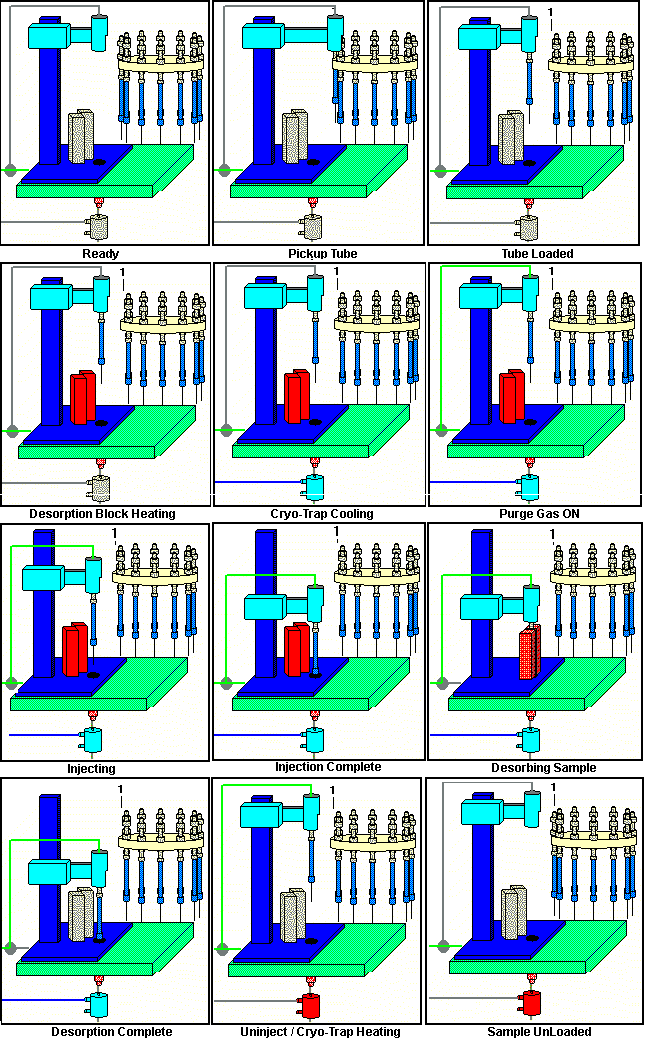
Figure 4 - Theory of Operation of the AutoDesorb System
A GC Cryo-Trap accessory is normally used with the AutoDesorb System. The Cryo-Trap mounts inside the GC oven at the bottom of the injection port. The Cryo-Trap permits the cryo-focusing or trapping of analytes at the front of the GC column during the thermal desorption process using either liquid nitrogen or liquid CO2. A heater circuit enables the rapid heating of the column to release the analytes in a narrow focused band at the front of the GC column for further GC separation and analysis. The AutoDesorb software and electronics module controls both the heating and cooling of the Cryo-Trap.
Description - Theory of Operation
Samples to be analyzed are collected on Glass Lined Stainless Steel (GLT) Desorption Tubes containing an adsorbent resin such as Tenax® TA or activated carbon. Alternatively, samples of small size (1 to 500 mg) can be packed directly into the desorption tube and subjected to direct thermal extraction.
When ready for analysis, the GLT desorption tubes are fitted with a syringe needle. A connecting tube is attached to the thermal desorption tube to permit the pick up of the desorption tube by the AutoDesorb Tower. The top of the connecting tube contains a spring loaded sealing ball to prevent contamination of the desorption tube.
After the desorption tube and needle have been attached to the connecting tube, they are then placed into the carousel on the AutoDesorb Tower. After the sample tube and connecting tube have been placed onto the carousel, the HP ChemStation software is set up with the GC or GC/MS method and the AutoDesorb screens are set up with the desorption method. When the GC or GC/MS sample analysis run is initialized on the ChemStation Window, the carousel is positioned to the correct desorption tube.
The desorption tube is then loaded into the pickup mechanism. This occurs by a pickup mechanism extending out to meet the desorption tube in the carousel. Next, the mechanism picks up the desorption tube. After the tube has been picked up, the arm retracts to position the desorption tube for injection into the GC.
The thermal desorption blocks are preheated to their initial temperature which was set up on the AutoDesorb PC window. As soon as the desorption block temperature is stabilized, the cooling gas to the Cryo-Trap is turned on and the Cryo-Trap is cooled to its preselected cooling temperature
After both the desorption block temperature and the Cryo-Trap temperatures are stabilized, the carrier gas through the desorption tube is turned on. The flow through the desorption tube can be adjusted via the flow controller on top of the AutoDesorb tower to between 1.0 ml/min and 120 ml/min. This purge gas will remain on for an initial purge time which has been previously selected.
The entire desorption process can be monitored by the AutoDesorb window on the PC. This window displays both graphically and digitally the status of the system. The graphic in this windows visually displays the operation of the desorption process as well as the current state.
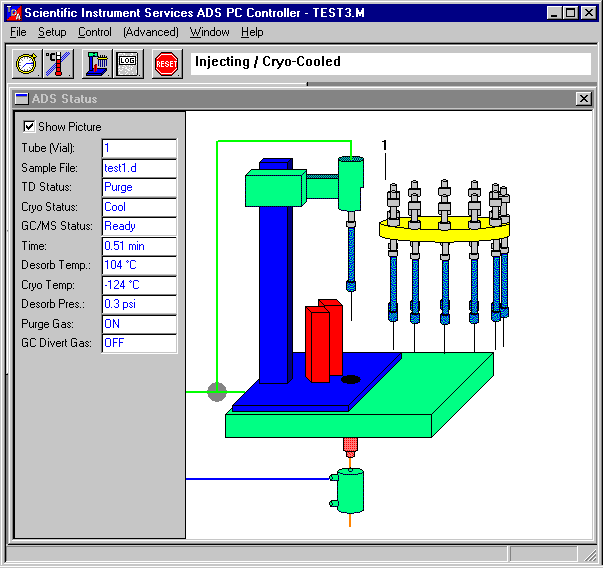
Figure 5 - AutoDesorb System Status Window
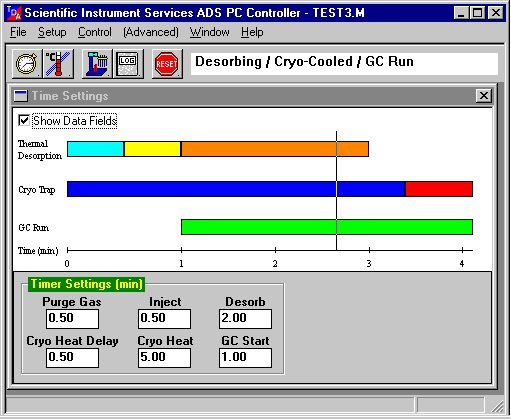
Figure 6 - AutoDesorb Time Settings Window
An additional AutoDesorb Windows display the time status of the desorption system. The times are normally preset before desorption is started, but can be changed on this window while the system is running. Values for the purge gas time, injection time, desorption time, cryo heat delay, cryo heat time and the GC start time are set on this screen. A vertical black bar displays the current time status of the thermal desorption process.
Another AutoDesorb PC window displays the thermal desorption and cryo trap temperatures. These values are normally preset before the desorption process is started, but can be changed during a desorption run. The desorption block initial temperature, ramp rate (up to 100 degrees per minute) and final desorption temperature are set on this screen. The Cryo-Trap mode (CO2, LN2 or None) as well as the Cryo-Trap cooling and heating temperatures are set on this screen. A vertical black bar displays the current temperature status of the desorption blocks and cryo-trap at the current time.
After the purge gas has been on for the pre selected time interval, the thermal desorption tube is injected into the GC injection port. The desorption tube will pass through the opening in the middle plate of the desorption unit base to position the desorption tube in proper alignment with the GC injection port and the normally open desorption block assembly. When injection is complete, a time delay permits the injection port pressure to equilibrate and the system is checked for pressure leaks. If leaks are detected, the sample is unloaded, the error reported and the next sample in the sequence is analyzed.
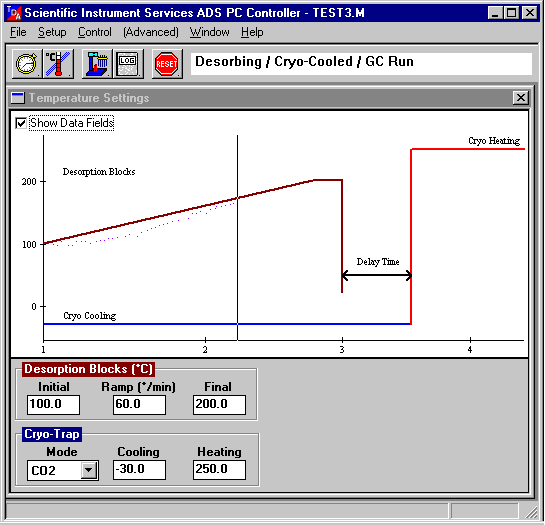
Figure 7 - AutoDesorb System Temperature Settings Window
If there are no leaks detected, the desorption blocks close around the desorption tube and the desorption tube will ballistically heat up to the set temperature or the temperature program ramp for the heater blocks will begin. The combination of the heat applied to the desorption tube and the carrier gas flow through the desorption tube will purge the desired analytes into the GC injection port and onto the front of the GC column. The various parameters are set and utilized according to the application requirements. Normally, desorption temperatures between 70 degrees C and 250 degrees C are suitable for most applications. The maximum desorption temperature permissible with the system is 450 degrees C. The heater blocks can be temperature programmed at ramp rates up to 100 degrees/min. Normal desorption times vary from 3 minutes to 15 minutes; however, longer desorption times up to 100 minutes are possible. This permits the trapped samples to be heated by the desorption tube heater blocks, the analytes desorbed from the adsorbent resin and injected directly into the injection port of the gas chromatograph via the shortest path possible, i.e direct injection into the GC much like a syringe.
During the desorption process, the analytes are trapped at the front of the GC column in the Cryo-Trap. The Cryo-Trap temperatures can be set down to -70 degrees C using liquid CO2 or down to -180 degrees C using liquid nitrogen. Since the column inside the Cryo-Trap is maintained at sub ambient temperatures, the desorbed compounds of interest are trapped on the front of the GC column in a narrow band. Despite the long desorption times, the peaks eluted from the column are extremely sharp and well resolved when the analytes are released.
When the desorption time has finished and the sample has been fully desorbed into the GC column, the desorption tube heater blocks are turned off and the desorption tube is uninjected from the GC injection port. The Cryo-Trap is rapidly heated to its preset heating temperature to release the analytes from the Cryo-Trap and the GC program is started by the AutoDesorb system. The GC temperature programming is commenced to elute and separate the analytes into the desired components.
The purge gas remains on for an additional 5 minutes to cool the desorption tube, after which time the desorption tube is unloaded back to the AutoDesorb carousel. After a preset time the Cryo-Trap is turned off and allowed to cool.
When the GC analysis is complete, the next sample of the ChemStation sequence is loaded, the GC and AutoDesorb system parameters are reset and this next sample is analyzed. Software Control and Operation
Testing
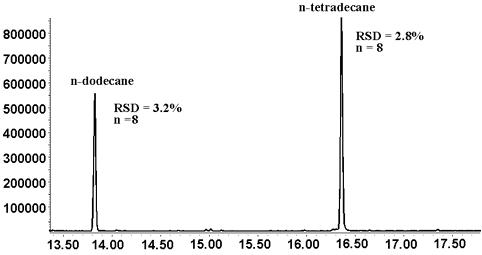
Figure 8 - AutoDesorb Analysis of Hydrocarbons
To demonstrate the operation of the AutoDesorb system and to verify its precision, repeatability and accuracy two tests were conducted. A solution of n-dodecane and n-tetradecane at a concentration of 100 ng/ul in methanol was prepared. Then 1.0 ul of this solution was injected into a set of 8 desorption tubes containing 100 mg of Tenax TA. The desorption tube was purged with 120 ml of helium to remove the methanol solvent. The desorption tubes were placed into the AutoDesorb system and automatically and sequentially desorbed and analyzed via a HP 6890 GC and the analytes detected and quantified by a HP 5973 MSD. The resultant chromatograms are shown in Figure 8. The area under each of the two peaks was integrated for each of the 8 runs and the RSD was calculated. For dodecane the TSD was 3.2% and for Tetradecane the TSD was 2.8%. The error observed was due to a number of factors including sample loading, thermal desorption efficiency, GC injection port stability, split accuracy, chromatography, GC stability and MS reproducibility. This result was quite good especially considering that no internal standard was used in the sample preparation and analysis.
In the next test, a calibration curve was generated as would normally be done for the quantitation of samples in the laboratory. Eight solutions of butylated hydroxutoluene (BHT) were prepared in methanol using d-20 BHT as the internal standard. The concentration of BHT was increased from 5 ng/ul to 100 ng/ul, while the internal standard concentration was held constant at 138 ng/ul. One (1.0) ul of each solution was injected onto desorption tubes packed with 100 mg of Tenax TA, purged with 120 ml of helium to remove the methanol solvent and sequentially analyzed with the AutoDesorb system. The resulting calibration curve is shown in Figure 9 and produced a correlation coefficient value of 0.000 for all the samples analyzed.
In a subsequent study, the AutoDesorb system has been used for the analysis of perfumes. In this study, the GC run was more than 120 minutes. The automated unattended operation of the AutoDesorb system enabled the collection of data overnight which produced considerable time savings. Additional studies on volatiles in papers was recently completed and many other studies are planned.
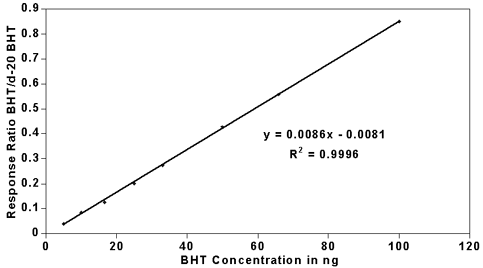
Figure 9 - BHT Calibration Curve
Conclusion
A new Automated Short Path Thermal Desorption System has been developed by Scientific Instrument Services to permit the automated and unattended analysis of thermal desorption samples. The new AutoDesorb system is an invaluable tool for increased productivity using the thermal desorption technique while also producing accurate and reproducible analysis results. The AutoDesorb system can be used for the automated thermal extraction and analysis of volatile and semi-volatile organics from samples in applications including environmental (air, water and soil), flavors in foods, pharmaceuticals, cosmetics, forensic (arson), plastics, building materials and other industrial products.
Features of the AutoDesorb System
- Automated Thermal Desorption Sample Introduction System
- Carousel holds 12 samples for unattended operation
- Uses the patented SIS 'Short Path Thermal Desorption" technology
- Designed to Operate with the HP-6890 GC or HP-5973 GC/MS
- PC Controlled Operation - User-friendly Graphical Interface
- Fully integrated with the HP ChemStation Software
- Permits the analysis of volatile and semi-volatile organics
- P&T Thermal Desorption and Direct Thermal Extraction
- No "memory effect" - individual flow path for each sample
- Mounts overtop the GC injection port
- Not permanently installed to the GC - easily removable
- Desorb samples at temperatures from room temperature up to 450º C, either isothermal or at ramp rates up to 100º C per minute
- Glass Lined stainless steel desorption sample tubes are inert and strong for sample handling
- GC Cryo-Trap Accessory for cryo trapping volatiles during desorption

